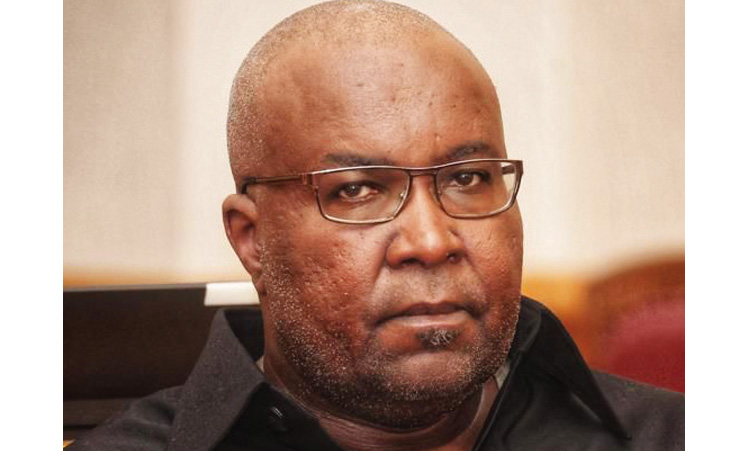CHENEY Viljoen (12) and Andre Kopp (13) are at first glance average teenagers, one living in Tsumeb and the other in Windhoek, but once you get to know them you notice that they are diabetics who have to inject themselves with insulin on a daily basis.
Andre was diagnosed in 2004 when he was ten and Cheney was nine when she was first diagnosed with diabetes. Both children experienced the same typical symptoms.They were extremely thirsty and drank constantly, they went to the loo a lot and had no energy.When Andre went to the doctor, his blood-sugar level was so high that the ordinary measuring device could not measure it.He was immediately admitted to hospital and had to stay there for five days so that the doctors could get his sugar level down.He received intravenous insulin and since then he has been injecting himself four times a day with two types of insulin.He injects himself before each meal and once at night before going to bed.”It is not sore at all, it is like a mosquito bite, as the needle is very thin and small,” he says.When Cheney was diagnosed, her blood-sugar level was 48.1 – a healthy person’s levels are between 4 and 8 – and she too was immediately admitted to the ICU where she stayed for a week.Andre is lucky, as his mother is a teacher at his school and she called all his classmates together to inform them and answer questions about his condition.His classmates are so supportive, they don’t even eat anything sweet during the school breaks.Andre’s sugar levels are a bit up and down at the moment, but this can be attributed to puberty and hormones.Being diabetic has not changed his life drastically, according to Andre.”I am still very active in sport and this also helps to keep my sugar levels more stable.I do karate, play hockey and squash, participate in all cycling events and swim a lot.”His mother, Sabine, says the whole family is eating healthier now but other than a change in their diet there have been no big changes since Andre was diagnosed.Cheney is not so fortunate, as she lives in Tsumeb, where many people don’t know about diabetes.Her classmates think it’s a contagious disease that they might catch from her.Her sugar levels are also not under control and she has had to be flown to Windhoek for emergency treatment twice.Lisa, Cheney’s mother, cried when she first head her daughter’s diagnosis, as she had no knowledge or understanding of the illness.Cheney also has to inject herself four times a day.”There is no support group for parents, children or other diabetics [at Tsumeb] and most of the doctors are also not very knowledgeable and familiar with the disease.It took us a long time to find a doctor who could help us but unfortunately she is in Windhoek and I thus drive regularly with Cheney to the capital,” says Lisa.Although the two children are the same age and both have to inject themselves with insulin, they handle their illness very differently.Andre takes diabetes in his stride, excels in sport and talks openly about his life as diabetic.Cheney, on the other hand, is angry and depressed about her situation; she feels alone and refuses to talk about it.Diabetes mellitus occurs when there is too much glucose in the blood.Insulin is a hormone that lowers glucose levels in the blood.Glucose, a simple form of sugar, is the main source of fuel for our bodies.Diabetes mellitus develops when the pancreas, which is the organ responsible for producing insulin, is either unable to make insulin, or the insulin is unable to work effectively, or both.Without insulin doing its job, glucose builds up in the blood, leading to high blood glucose levels which cause a variety of health problems.The body converts the glucose from food into energy.Glucose comes ready made in sweet foods such as sweets and cakes, or from starchy foods such as potatoes, pasta or bread once they’re digested.Under normal circumstances, the hormone insulin carefully regulates how much glucose is in the blood.Insulin stimulates cells to absorb enough glucose from the blood for the energy, or fuel, that they need.Insulin also stimulates the liver to absorb and store any glucose that’s left over.After a meal, the amount of glucose in the blood rises, and this triggers the release of insulin.When blood glucose levels fall, during exercise for example, insulin levels fall too.A second hormone manufactured by the pancreas is called glucagon.It stimulates the liver to release glucose when it’s needed, and this raises the level of glucose in the blood.Insulin is manufactured and stored in the pancreas, which is a thin gland about 15 cm long that lies crosswise behind the stomach.It’s often described as being two glands in one, since in addition to making insulin it also produces enzymes that are vital for digestion of food.These include lipase, which helps to digest fat, and amylase that helps to digest starchy foods.It also releases ‘bicarbonate of soda’ to neutralise any stomach acid that may otherwise damage the lining of the gut.There are two types of diabetes.Type 1 diabetes is caused by an autoimmune disorder, which is a problem with the body’s immune system.In a healthy body, specialised cells in the pancreas make insulin.Therefore people with type 1 diabetes require insulin injections to control their blood glucose levels.It usually occurs in people under 30 years, but can occur at any age.Type 1 diabetes affects approximately 15 per cent of people with diabetes.In type 2 diabetes, the beta cells still produce insulin.However, either the cells do not respond properly to the insulin or the insulin produced naturally is not enough to meet the needs of the body.So insulin is usually still present in a person with type 2 diabetes, but it does not work as well as it should.Some people with type 2 diabetes can keep it under control by losing weight, changing their diet, and increasing their exercise.Others take one or more medications, including insulin.It usually occurs in people who are over the age of 50 years and have a family history of diabetes.Type 2 diabetes affects approximately 85 per cent of people with diabetes.Being overweight makes insulin less efficient at controlling blood glucose levels.This is often referred to as insulin resistance.Type 2 diabetes often responds to a healthy eating plan, appropriate exercise and weight reduction; but sometimes tablets and then later, insulin may be required.Diabetics need to monitor and control their blood sugar carefully as too high blood sugar – or hyperglycaemia – strains the body and can cause problems later on.These problems are called complications and include: * Neuropathy or nerve damage.It can cause problems in legs as well as other systems in the body and often leads to the toes, feet and legs having to be amputated.* Retinopathy is damage to the eyes which can cause blindness.* Nephropathy is kidney disease.The kidneys filter waste out of the blood when they don’t work well, poisons can build up leading to kidney failure and patients having to undergo a kidney transplant.* Heart disease is more common in people with diabetes.* People with diabetes are at a higher risk for gum disease and other mouth-related problems.The signs and symptoms of diabetes include increased thirst, slow healing cuts and wounds, blurred vision, unexpected weight loss, frequent urination and feeling tiered and lethargic.Once a person is diagnosed as diabetic, healthy eating, regular exercise, medication, regular visits to the various medical professionals like the doctor, dentist and dietician, the monitoring of the blood glucose levels and a positive mental attitude are vital in keeping the blood-sugar levels under control and thus being able to have a long and healthy life.Blood sugar levels can easily be tested at any pharmacy or doctor.Some famous diabetics include tennis player Billy-Jean King, Blues legend B.B.King, South African politician Winnie Mandela, rock pioneer Elvis Presley, R&B star Luther Vandross, composer Andrew Lloyd Webber, actress Halle Berry, singers Johnny Cash and Aretha Franklin and writer Ernest Hemmingway.Both children experienced the same typical symptoms.They were extremely thirsty and drank constantly, they went to the loo a lot and had no energy.When Andre went to the doctor, his blood-sugar level was so high that the ordinary measuring device could not measure it.He was immediately admitted to hospital and had to stay there for five days so that the doctors could get his sugar level down.He received intravenous insulin and since then he has been injecting himself four times a day with two types of insulin.He injects himself before each meal and once at night before going to bed.”It is not sore at all, it is like a mosquito bite, as the needle is very thin and small,” he says.When Cheney was diagnosed, her blood-sugar level was 48.1 – a healthy person’s levels are between 4 and 8 – and she too was immediately admitted to the ICU where she stayed for a week.Andre is lucky, as his mother is a teacher at his school and she called all his classmates together to inform them and answer questions about his condition.His classmates are so supportive, they don’t even eat anything sweet during the school breaks.Andre’s sugar levels are a bit up and down at the moment, but this can be attributed to puberty and hormones.Being diabetic has not changed his life drastically, according to Andre.”I am still very active in sport and this also helps to keep my sugar levels more stable.I do karate, play hockey and squash, participate in all cycling events and swim a lot.”His mother, Sabine, says the whole family is eating healthier now but other than a change in their diet there have been no big changes since Andre was diagnosed.Cheney is not so fortunate, as she lives in Tsumeb, where many people don’t know about diabetes.Her classmates think it’s a contagious disease that they might catch from her.Her sugar levels are also not under control and she has had to be flown to Windhoek for emergency treatment twice.Lisa, Cheney’s mother, cried when she first head her daughter’s diagnosis, as she had no knowledge or understanding of the illness.Cheney also has to inject herself four times a day.”There is no support group for parents, children or other diabetics [at Tsumeb] and most of the doctors are also not very knowledgeable and familiar with the disease.It took us a long time to find a doctor who could help us but unfortunately she is in Windhoek and I thus drive regularly with Cheney to the capital,” says Lisa.Although the two children are the same age and both have to inject themselves with insulin, they handle their illness very differently.Andre takes diabetes in his stride, excels in sport and talks openly about his life as diabetic.Cheney, on the other hand, is angry and depressed about her situation; she feels alone and refuses to talk about it.Diabetes mellitus occurs when there is too much glucose in the blood.Insulin is a hormone that lowers glucose levels in the blood.Glucose, a simple form of sugar, is the main source of fuel for our bodies.Diabetes mellitus develops when the pancreas, which is the organ responsible for producing insulin, is either unable to make insulin, or the insulin is unable to work effectively, or both.Without insulin doing its job, glucose builds up in the blood, leading to high blood glucose levels which cause a variety of health problems.The body converts the glucose from food into energy.Glucose comes ready made in sweet foods such as sweets and cakes, or from starchy foods such as potatoes, pasta or bread once they’re digested.Under normal circumstances, the hormone insulin carefully regulates how much glucose is in the blood.Insulin stimulates cells to absorb enough glucose from the blood for the energy, or fuel, that they need.Insulin also stimulates the liver to absorb and store any glucose that’s left over.After a meal, the amount of glucose in the blood rises, and this triggers the release of insulin.When blood glucose levels fall, during exercise for example, insulin levels fall too.A second hormone manufactured by the pancreas is called glucagon.It stimulates the liver to release glucose when it’s needed, and this raises the level of glucose in the blood.Insulin is manufactured and stored in the pancreas, which is a thin gland about 15 cm long that lies crosswise behind the stomach.It’s often described as being two glands in one, since in addition to making insulin it also produces enzymes that are vital for digestion of food.These include lipase, which helps to digest fat, and amylase that helps to digest starchy foods.It also releases ‘bicarbonate of soda’ to neutralise any stomach acid that may otherwise damage the lining of the gut.There are two types of diabetes.Type 1 diabetes is caused by an autoimmune disorder, which is a problem with the body’s immune system.In a healthy body, specialised cells in the pancreas make insulin.Therefore people with type 1 diabetes require insulin injections to control their blood glucose levels.It usually occurs in people under 30 years, but can occur at any age.Type 1 diabetes affects approximately 15 per cent of people with diabetes.In type 2 diabetes, the beta cells still produce insulin.However, either the cells do not respond properly to the insulin or the insulin produced naturally is not enough to meet the needs of the body.So insulin is usually still present in a person with type 2 diabetes, but it does not work as well as it should.Some people with type 2 diabetes can keep it under control by losing weight, changing their diet, and increasing their exercise.Others take one or more medications, including insulin.It usually occurs in people who are over the age of 50 years and have a family history of diabetes.Type 2 diabetes affects approximately 85 per cent of people with diabetes.Being overweight makes insulin less efficient at controlling blood glucose levels.This is often referred to as insulin resistance.Type 2 diabetes often responds to a healthy eating plan, appropriate exercise and weight reduction; but sometimes tablets and then later, insulin may be required.Diabetics need to monitor and control their blood sugar carefully as too high blood sugar – or hyperglycaemia – strains the body and can cause problems later on.These problems are called complications and include: * Neuropathy or nerve damage.It can cause problems in legs as well as other systems in the body and often leads to the toes, feet and legs having to be amputated.* Retinopathy is damage to the eyes which can cause blindness.* Nephropathy is kidney disease.The kidneys filter waste out of the blood when they don’t work well, poisons can build up leading to kidney failure and patients having to undergo a kidney transplant.* Heart disease is more common in people with diabetes.* People with diabetes are at a higher risk for gum disease and other mouth-related problems.The signs and symptoms of diabetes include increased thirst, slow healing cuts and wounds, blurred vision, unexpected weight loss, frequent urination and feeling tiered and lethargic.Once a person is diagnosed as diabetic, healthy eating, regular exercise, medication, regular visits to the various medical professionals like the doctor, dentist and dietician, the monitoring of the blood glucose levels and a positive mental attitude are vital in keeping the blood-sugar levels under control and thus being able to have a long and healthy life.Blood sugar levels can easily be tested at any pharmacy or doctor.Some famous diabetics include tennis player Billy-Jean King, Blues legend B.B.King, South African politician Winnie Mandela, rock pioneer Elvis Presley, R&B star Luther Vandross, composer Andrew Lloyd Webber, actress Halle Berry, singers Johnny Cash and Aretha Franklin and writer Ernest Hemmingway.
Stay informed with The Namibian – your source for credible journalism. Get in-depth reporting and opinions for
only N$85 a month. Invest in journalism, invest in democracy –
Subscribe Now!










